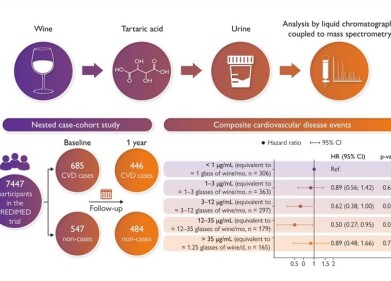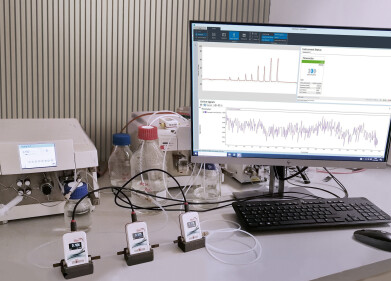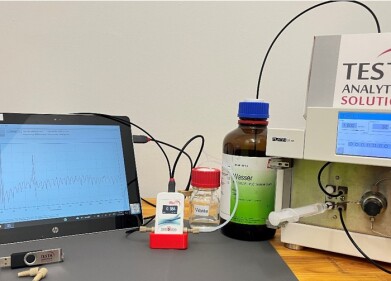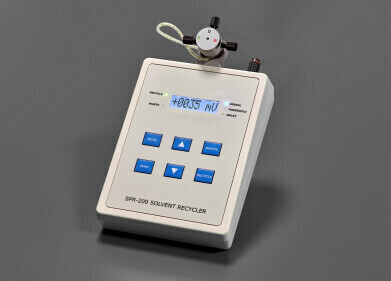Chromatography
Laboratory Generators - Everything You Need to Know
Jun 07 2022
From medical research and drug development to environmental analysis and forensics, laboratory generators are a mainstay in scientific facilities. Using readily available substrates, these workhorses generate pure chemical gases needed to carry out experiments and drive research. Want to know more? Read on for a complete guide to laboratory generators, including information on how they’re used and what’s next for the industry.
The benefits of laboratory generators
Used in facilities around the world, laboratory generators help scientists improve workflows and unlock valuable data. Below, we list some of the key benefits of laboratory generators:
- A fast and reliable source of purified gas
- Guarantees a continuous supply
- Mitigates the safety risks associated with manually handling high pressure gas cylinders
- Many laboratory generators are automated and require no supervision from personnel
- Minimal downtime improves workflows and laboratory efficiency
- Compact, portable designs are ideal for use in the field and for mobile laboratories
- Eliminates the need to purchase expensive gas cylinders
- High purity levels prevent damage of sensitive equipment and instruments
Main types of laboratory gas generators
Laboratory generators are a fast, reliable and cost-effective way to produce purified gas needed to operate scientific instruments. For example, gas chromatographs rely on high quality carrier gases such as helium, nitrogen, hydrogen and carbon dioxide to separate compounds. Similarly, Fourier-transform infrared spectrometers rely on CO2-free gas to analyse the absorption spectrum of molecules when exposed to infrared light.
While all laboratory generators are used to generate gas, there are variations within the market. Below, we take a closer look at the main types of laboratory gas generators.
Nitrogen gas generators
On-site nitrogen gas generators allow scientists to produce pure, free-flowing nitrogen at the touch of a button. The most sophisticated generators are capable of producing nitrogen with a purity level of 99.999%. Cellular research laboratories rely on nitrogen gas generators to maintain stable environments with zero fluctuations in temperature, humidity and oxygen levels. Why is this important? Unplanned variations can impact results and compromise the reliability of data.
In Vitro Fertilization (IVF) incubators are one of many applications for nitrogen gas generators. The instruments allow technicians to replicate the conditions of a female uterus and maintain a controlled atmosphere. This gives embryos the best possible chance of surviving. Demand for IVF is rapidly growing, with analysts predicting the market will be worth USD$1 billion by 2028. As a result, demand for nitrogen gas generators is also expected to grow.
Hydrogen gas generators
From electrolyser stacks to humidification systems, hydrogen is used to power a myriad of laboratory instruments. Hydrogen generators are a fast and reliable way to generate the gas, usually via water electrolysis. This process uses electricity to split water (H2O) into hydrogen (H) and oxygen (O).
Many gas chromatographs are run on hydrogen produced by gas generators. For example, gas chromatographs used in food analysis laboratories and environmental research facilities. Hydrogen generators are also used to run gas chromatographs in forensics laboratories, where scientists use the instruments to analyse blood samples and identify toxins.
“The hydrogen gas generators segment accounted for the highest growth rate in the laboratory gas generators market in 2020. This can be attributed to the growing preference for hydrogen as a cost-effective alternative to helium, as it offers faster analysis and optimal results,” reads the report.
Zero air generators
Clean, dry and free from pollutants and hydrocarbons, zero air generators are widely used for analytical research. They purify air and ensure results aren’t compromised by contaminants such as methane.
Purge gas generators
Purge gas generators are designed for use with FT-IR Spectrometers. The advanced instruments remove impurities such as water vapour and CO2 from compressed air, often using an ultra-fine molecular sieve. High accuracy and sensitivity for gases make FT-IR Spectrometers particularly useful for environmental research and emissions monitoring.
TOC gas generators
Total Organic Carbon (TOC) generators produce carrier and combustion gas for TOC instruments. As well as delivering a reliable gas supply to TOC instruments, they eliminate the need to purchase and handle high pressure gas cylinders. The latest TOC generators use technologies such as catalytic oxidisation and Pressure Swing Adsorption (PSA) to purify gas.
As well as powering scientific research in laboratories, TOC generators are fundamental to public health. Around the world, municipal drinking water plants rely on TOC analysers to detect contaminants and ensure public drinking water is safe for consumption.
At the Michigan-based Litehouse wastewater treatment facility, TOC analysis is being used to improve operations. Every day, food manufacturing processes at the factory produce almost 350,000 litres of wastewater. TOC analysers are used to monitor discharge limit parameters and meet legal requirements, as well as improve decision making processes and dramatically reduce waste management costs.
PSA gas generators
Pressure Swing Adsorption (PSA) generators use a compressed air stream to separate gases according to molecular characteristics and adsorption properties. They’re often used to capture nitrogen and offer impressive purity levels of up to 99.9995%. Other product gases separated by PSA generators include hydrogen, oxygen, carbon monoxide, methane and ethylene.
As well as being used in small-scale laboratories, PSA is making a mark in the energy sector. The technology is being harnessed to produce ultra-pure hydrogen and accelerate the transition to low-carbon energy.
“Hydrogen (H2) will play a key role in the future low-carbon energy society,” reads a recent article published in the International Journal of Hydrogen Energy. “The industrial production of hydrogen involves chemical reactions and purification steps. Pressure Swing Adsorption (PSA) is a versatile process able to produce ultrapure hydrogen (99.99+%) from various gas mixtures, resulting in the most widespread purification technology worldwide.”
Membrane nitrogen generator
Membrane nitrogen generators are another popular way to generate on-site gas. Instruments are equipped with a separation membrane, which is made up of thousands of hollow fibres. As compressed air passes through the fibres, ‘fast’ gases such as water vapour, oxygen and CO2 are separated from nitrogen, which is classed as a ‘slow’ gas.
Cryogenic generator
Cryogenic generators transform ambient air into high-quality hydrogen and nitrogen. The instruments use ultra-low temperatures to distil ambient air and produce laboratory grade gas. Cryogenic generators aren’t just used in laboratories, with a recent report published in the journal Cryogenics spotlighting a breakthrough from the Korea Aerospace Research Institute. Using real engine operating conditions, a team of scientists used a helium heat exchanger to improve efficiency between helium and combustion gas. The findings will be used to develop technology for the KSLV-II launch vehicle.
“The study has demonstrated an effective method for analysing and evaluating the performance of heat exchanger modules in a real launch system, which addresses several current problems in propulsion design utilising this technology,” reads the article. “The study’s findings will help to design more efficient, low-weight next-generation propulsion systems for launch vehicles.”
Steam generator
Steam generators use an internal heating system to convert H20 into its gaseous form. Autoclaves, also known as steam sterilisers, are one of the most common examples of laboratory steam generators. The instruments usually feature built-in steam generators which use pressure and heat to kill bacteria, viruses, spores and fungi. Steam generators are widely used in medical research laboratories, where sterile equipment and instruments are critical to results.
A rapidly growing market
A recent MarketsandMarkets report spotlighting the global laboratory gas generators market predicts the industry will reach a value of more than USD$685 million by 2026. This represents an enormous leap from the USD$353 million market value assigned in 2021. Increasing demand for the instruments in drug development and food manufacturing laboratories is one of the key drivers of growth identified in the report.
“The growth of the laboratory gas generators market is primarily driven by the growing importance of analytical techniques in drug and food approval processes, rising food safety concerns, increasing adoption of laboratory gas generators owing to their various advantages over conventional gas cylinders, growing demand for hydrogen gas as an alternative to helium, and the increasing R&D spending in target industries,” reads the report.
R&D activities drive demand for laboratory gas generators
A heightened focus on R&D activities is another factor driving growth, with the life sciences and petrochemical industries key players. In 2019, the Pharmaceutical Research and Manufacturers of America (PhRMA) channelled more than USD$80 billion into R&D, which allowed many laboratories to invest in gas generators. The European Commission followed suit in its Horizon 2020 framework, which allocated more than EUR 100 billion to R&D activities.
“The life science industry accounted for the largest share of the global laboratory gas generators market. The major factors driving the growth of this segment are the rising demand for laboratory analytical instruments, increase in drug research activities, and stringent regulations relating to the drug discovery process,” reads the MarketsandMarkets report.
The future of laboratory generators
From food analysis facilities to IVF clinics, laboratory generators are used across a wide range of industries and sectors. Access to on-site gas generators offers a myriad of benefits, including faster workflows, less downtime due to gas shortages and higher purity percentages. Find out more about the latest advances in ‘Gas Generation Solutions for Streamlined Workflows’. Or check out 'Optimising Bioreactor Yields with Smart Sensors' for more on the latest laboratory developments.
Digital Edition
Lab Asia 31.6 Dec 2024
December 2024
Chromatography Articles - Sustainable chromatography: Embracing software for greener methods Mass Spectrometry & Spectroscopy Articles - Solving industry challenges for phosphorus containi...
View all digital editions
Events
Jan 22 2025 Tokyo, Japan
Jan 22 2025 Birmingham, UK
Jan 25 2025 San Diego, CA, USA
Jan 27 2025 Dubai, UAE
Jan 29 2025 Tokyo, Japan



















